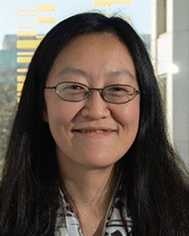Revolutionizing microfluidics with artificial intelligence: a new dawn for lab-on-a-chip technologies
Keisuke
Goda
*abc,
Hang
Lu
de,
Peng
Fei
f and
Jochen
Guck
g
aDepartment of Chemistry, The University of Tokyo, Tokyo 113-0033, Japan. E-mail: goda@chem.s.u-tokyo.ac.jp
bDepartment of Bioengineering, University of California, Los Angeles, California 90095, USA
cInstitute of Technological Sciences, Wuhan University, Wuhan 430072, China
dSchool of Chemical and Biomolecular Engineering, Georgia Institute of Technology, Atlanta, Georgia 30332, USA
ePetit Institute for Bioengineering and Bioscience, Georgia Institute of Technology, Atlanta, Georgia 30332, USA
fSchool of Optical and Electronic Information, Wuhan National Laboratory for Optoelectronics, Advanced Biomedical Imaging Facility, Huazhong University of Science and Technology, Wuhan 430074, China
gMax Planck Institute for the Science of Light and Max-Planck-Zentrum für Physik und Medizin, Erlangen, Germany
In our swiftly changing scientific and technological landscape, the marriage of two distinct yet complementary fields, microfluidics and artificial intelligence (AI), is garnering considerable attention (https://doi.org/10.1039/D2LC00813K).1–5 This groundbreaking blend of physical manipulation and digital intelligence signifies a crucial turning point for lab-on-a-chip technologies, marking the onset of an innovative epoch of scientific exploration and technological advancement. This unique synergy opens up opportunities for notable advancements in a myriad of sectors, ranging from medical diagnostics and personalized therapeutics to environmental monitoring and complex biochemical research. In today's world, where the quest for efficiency and miniaturization is relentless, the integration of AI and microfluidics is set to revolutionize our approach to these challenges (https://doi.org/10.1039/D2LC00813K).1–5 It provides solutions that transcend traditional innovation, offering transformative potential that could alter the landscape of many scientific and technological fields.
Microfluidics, the discipline focused on manipulating and controlling fluids on the micro- and nano-meter scale, has already brought about a significant revolution in biological and chemical research methodologies.6–8 The miniaturization achieved by microfluidics has dramatically reduced the need for large sample and reagent volumes, leading to cost reductions and accelerated reaction times. These advantages have solidified the position of microfluidics as a fundamental component of lab-on-a-chip technologies. It enables high-throughput, parallelized analysis, opening up new opportunities in point-of-care diagnostics, drug discovery and environmental testing, among other applications. Nevertheless, the journey of microfluidics from its conceptual inception to widespread application has encountered a series of challenges.9,10 Complexities associated with intricate device fabrication, precise fluid control, comprehensive data analysis, and overall system optimization require sophisticated and robust solutions.
This is where the promise of AI comes into play. Armed with capabilities such as pattern recognition, predictive analytics, and autonomous decision-making, AI offers an arsenal of tools that can effectively navigate the hurdles faced by microfluidics while enhancing its capabilities (https://doi.org/10.1039/D2LC00813K).1–5 AI, particularly machine-learning algorithms, can optimize the design of microfluidic devices, augmenting their efficiency, adaptability, and ability to perform complex tasks (https://doi.org/10.1039/D2LC00254J, https://doi.org/10.1039/D2LC00322H).3,11–14 Ranging from relatively simple tasks such as flow control and mixing, to more complex functions such as sorting and detection, AI can fine-tune these processes, enhancing their reliability and accuracy. Furthermore, AI's inherent ability to learn from data and adapt to new situations can aid in the development of “smart” microfluidic devices (https://doi.org/10.1039/D2LC00254J, https://doi.org/10.1039/D2LC00843B). These devices can respond to changing conditions in real time, a feature that could prove extremely useful in dynamic environments such as in vivo diagnostic or therapeutic applications.
In the realm of microfluidics, one of the most significant applications of AI is data analysis (https://doi.org/10.1039/D2LC00813K).1,4,15–17 High-throughput screening in microfluidic experiments often generates an overwhelming deluge of data. However, AI, with its superior processing power and pattern recognition capabilities, can effectively navigate this sea of information, identify patterns and correlations, and provide valuable insights to guide decision-making processes (https://doi.org/10.1039/D1LC01006A, https://doi.org/10.1039/D2LC00984F, https://doi.org/10.1039/D1LC00755F).18–28 In contrast to conventional data analysis methods, which may overlook subtle patterns within these extensive datasets, AI has the potential to illuminate hidden connections, thus enabling researchers to gain fresh insights and drive unprecedented discoveries (https://doi.org/10.1039/D2LC00983H, https://doi.org/10.1039/D1LC01043C, https://doi.org/10.1039/D2LC00596D, https://doi.org/10.1039/D2LC00902A).29–36 Beyond mere analysis, the capacity of AI to extrapolate these insights for predictive modeling carries profound implications for microfluidic applications. AI can construct models based on past data to forecast experimental outcomes or system behaviors, thereby empowering researchers to anticipate results and optimize their experiments proactively.† This predictive capability proves particularly crucial in arenas such as drug discovery and personalized medicine, where accurately predicting a drug's efficacy or a patient's response to treatment can save precious time, cut costs, and in some cases, even save lives.
The fusion of AI and microfluidics represents a revolutionary change in point-of-care diagnostics, indicating a significant potential to redefine healthcare as we currently understand it.‡37,38 AI-powered microfluidic systems have the ability to swiftly analyze biological samples such as blood and saliva, delivering accurate diagnoses in real time.§ This advancement is particularly pivotal in resource-limited settings and during infectious disease outbreaks, where rapid diagnosis and prompt treatment are paramount (https://doi.org/10.1039/D1LC00467K, https://doi.org/10.1039/D2LC00478J). Yet, the revolution does not stop at diagnostics. AI-integrated microfluidic devices also have tremendous potential in the realm of personalized medicine. They can harness patient-specific data to customize treatments, with AI algorithms analyzing data from these devices in real time, thus enabling healthcare providers to monitor and adapt a patient's treatment regimen as necessary (https://doi.org/10.1039/D2LC00304J, https://doi.org/10.1039/D2LC00637E). This capability is particularly beneficial in managing chronic illnesses, such as diabetes or cardiovascular disease, where continuous monitoring and treatment adjustments can significantly enhance patient outcomes. All in all, the fusion of AI and microfluidics, encapsulating everything from diagnostics to personalized treatment, could democratize healthcare, making advanced diagnostics and personalized treatments accessible to all, regardless of geographical or economic constraints.
Indeed, while AI assists microfluidics, the latter also contributes significantly to AI (https://doi.org/10.1039/D2LC00813K).1–5 Microfluidics can bolster AI in a number of ways. Firstly, microfluidic devices excel at producing vast quantities of high-quality data. They have the ability to execute a multitude of experiments or tests concurrently, maintaining precise control over conditions. Such data can subsequently be employed to train AI algorithms, thereby enhancing their prediction accuracy and decision-making abilities. Secondly, microfluidic systems commonly come equipped with sensors that are adept at monitoring conditions in real time. This sensor-derived data can be introduced into an AI system, which allows it to adapt the system's operations based on fluctuating conditions. Such dynamic adaptability can dramatically boost the efficiency and versatility of AI systems. Thirdly, microfluidics is known to facilitate automation of complex procedures and unifies multiple experimental steps into one device. When coupled with AI, this has the potential to spawn fully automated systems that can undertake intricate tasks with minimal to zero human intervention. Lastly, due to their small size and comparatively low production cost, microfluidic systems are very appealing. They offer an avenue to apply AI in scenarios where it might be considered unfeasible due to constraints related to size or cost.
In sum, the dynamic integration of AI and microfluidics heralds a new dawn for lab-on-a-chip technologies, marking a transformative breakthrough that magnifies the potential of each individual discipline. This convergence is more than just the sum of its parts – it is a synergistic interaction that promises to overcome the existing challenges in the field, enhancing efficiency, and driving the boundaries of what is currently achievable with lab-on-a-chip technologies. As we continue to delve into and comprehend the interplay between AI and microfluidics, we are on the precipice of a scientific revolution that extends beyond research into healthcare and other sectors. This union paves the way for the development of smarter, more adaptive devices that can learn from data, adapt to changing conditions, and make intelligent decisions. We are entering a new era where diagnostics, therapeutics, and research are not just personalized but also predictive and proactive. The future of lab-on-a-chip technologies is indeed bright, powered by the transformative confluence of AI and microfluidics. The thematic collection “AI in Microfluidics” showcases some of the most promising first steps into this future.
Acknowledgements
This paper was written with the assistance of ChatGPT, which was instrumental in revising the initial draft.Notes and references
- A. Isozaki, et al. , Lab Chip, 2020, 20, 3074–3090 RSC.
- L. Liu, et al. , Nanoscale, 2021, 13, 19352–19366 RSC.
- E. A. Galan, et al. , Matter, 2020, 3, 1893–1922 CrossRef.
- J. Riordon, et al. , Trends Biotechnol., 2019, 37, 310–324 CrossRef CAS PubMed.
- J. Zheng, et al. , Biosens. Bioelectron., 2021, 194, 113666 CrossRef CAS PubMed.
- G. M. Whitesides, Nature, 2006, 442, 368–373 CrossRef CAS PubMed.
- E. K. Sackmann, et al. , Nature, 2014, 507, 181–189 CrossRef CAS PubMed.
- S.-Y. Teh, et al. , Lab Chip, 2008, 8, 198–220 RSC.
- S. Battat, et al. , Lab Chip, 2022, 22, 530–536 RSC.
- D. T. Chiu, et al. , Chem, 2017, 2, 201–223 CAS.
- N. H. Bhuiyan, et al. , Anal. Chem., 2022, 94, 3872–3880 CrossRef CAS PubMed.
- N. Pouyanfar, et al. , Trends Environ. Anal. Chem., 2022, 34, e00160 CrossRef CAS.
- S. Srikanth, et al. , Sens. Actuators, A, 2021, 332, 113096 CrossRef CAS.
- Y. Ding, et al. , Anal. Chem., 2020, 92, 132–149 CrossRef CAS PubMed.
- S. Z. Harofte, et al. , Small, 2022, 18, 2203169 CrossRef PubMed.
- B. Wang, et al. , Nat. Commun., 2023, 14, 1341 CrossRef CAS PubMed.
- K. C. M. Lee, et al. , Trends Biotechnol., 2021, 39, 1249–1262 CrossRef CAS PubMed.
- N. Nitta, et al. , Cell, 2018, 175, 266–276 CrossRef CAS PubMed.
- A. A. Nawaz, et al. , Nat. Methods, 2020, 17, 595–599 CrossRef CAS PubMed.
- H. Zhang, et al. , Biomed. Opt. Express, 2019, 10, 1044–1063 CrossRef PubMed.
- Y. Zhou, et al. , Trends Biotechnol., 2021, 39, 978–989 CrossRef CAS PubMed.
- A. Isozaki, et al. , Lab Chip, 2020, 20, 2263–2273 RSC.
- H. Mikami, et al. , Nat. Commun., 2020, 11, 1162 CrossRef CAS PubMed.
- K. Chung, et al. , Nat. Methods, 2008, 5, 637–643 CrossRef CAS PubMed.
- M. M. Crane, et al. , Lab Chip, 2010, 10, 1509–1517 RSC.
- M. M. Crane, et al. , Nat. Methods, 2012, 9, 977–980 CrossRef CAS PubMed.
- M. M. Crane, et al. , Lab Chip, 2009, 9, 38–40 RSC.
- M. Zhan, et al. , PLoS Comput. Biol., 2015, 11, e1004194 CrossRef PubMed.
- S. Chaudhary, et al. , Nat. Commun., 2022, 13, 5165 CrossRef CAS PubMed.
- T. Zhu, et al. , Sens. Actuators, B, 2021, 348, 130638 CrossRef CAS.
- Z. Wang, et al. , Nat. Methods, 2021, 18, 551–556 CrossRef CAS PubMed.
- S. Chaudhary, et al. , Nat. Commun., 2022, 13, 5165 CrossRef CAS PubMed.
- S. Chaudhary, et al. , eLife, 2021, 10, e60321 CrossRef CAS PubMed.
- A. San Miguel, et al. , Nat. Commun., 2016, 7, 12990 CrossRef CAS PubMed.
- K. Bates, et al. , PLoS Comput. Biol., 2022, 18, e1009942 CrossRef CAS PubMed.
- I. Carlos de Cáceres, et al. , Integr. Biol., 2018, 10, 539–548 CrossRef PubMed.
- M. Herbig, et al. , Sci. Rep., 2022, 12, 870 CrossRef CAS PubMed.
- D. Soteriou, et al. , Nat. Biomed. Eng., 2023 DOI:10.1038/s41551-023-01015-3.
| This journal is © The Royal Society of Chemistry 2023 |




